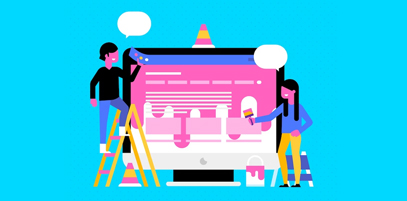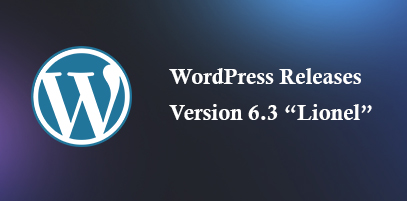The Future of Web Design: How Sustainability Can Drive Innovation and Growth
By :- Laura Davidson

Did you know websites are bad for the planet? Our gadgets, the internet, and the systems supporting them cause nearly 3.7% of global greenhouse emissions. The more complex your website is, the higher level of energy it requires to load, causing a greater climate impact.
Surprising but true!
That’s why sustainable web design has become essential in the industry, as more and more governments, businesses, and individuals are committing to ambitious climate goals.
What is Sustainable Web Design?
Sustainable web design is the planet-first approach to designing websites to reduce their impact on the environment. This approach involves designing digital services while focusing on the principles of the Sustainable Web Manifesto:
-
Clean: Your websites should use renewable energy sources, like green-powered web hosting.
-
Efficient: Your services should use the least possible amount of energy.
-
Open: All services should be accessible to everybody, and users must have full control of their data.
-
Honest: Your website should not provide misleading content through web design.
-
Regenerative: All services should support the economy that further supports communities and the environment.
-
Resilient: Your services should be delivered when and where they are most required.

4 Ways Sustainable Websites Can Drive Business Growth
Here are some key ways in which a sustainable website can drive innovation and growth for your business:
-
Emphasizes efficiency and optimized performance: By focusing on lightweight coding and efficient resource usage, sustainable websites tend to load faster and need fewer server resources. This further helps deliver a better user experience, reduces bounce rates, and increases conversion rates. As a result, visitors are more likely to engage with your brand and contribute to business growth.
-
Incorporates responsive and mobile-friendly layouts: With the growing use of mobile devices, it’s critical to have one website for different screen sizes and resolutions. By adopting responsive web design principles, sustainable websites ensure that visitors can access the site seamlessly on various devices. This accessibility improves user engagement, bringing you more traffic and business growth.
-
Promotes accessibility and inclusivity: By adhering to accessibility guidelines, such as providing alt text for images, using proper headings, and ensuring color contrast, you can make your website more usable for individuals with disabilities. This approach shows your commitment to social responsibility and opens up new market segments, letting you tap into a larger customer base and drive business growth.
-
Incorporates eco-friendly practices: This includes using clean code, optimizing images and media, minimizing server requests, and implementing energy-efficient hosting solutions. These practices reduce your site’s carbon footprint and lead to environmental sustainability. As a result, you attract environmentally-conscious customers who align with your values. This further brings increased brand loyalty, positive word-of-mouth, and organic business growth.
-
Encourages innovation in user experience (UX) and interface design: By focusing on simplicity, intuitive navigation, and clear calls to action, sustainable websites provide an engaging user experience. Further, by incorporating innovative UX features and immersive storytelling techniques, you can stand out in the marketplace. Unique and memorable web experiences can generate buzz, attract new customers, and drive business growth.
Conclusion
Sustainable web designs enhance user experience, expand customer reach, showcase social and environmental responsibility, and encourage creative approaches to UX. That’s why by investing in sustainable web design practices, businesses can create a competitive advantage, attract a wider audience, and ultimately drive innovation and growth in the digital landscape.
Recent Topics
-
 WordPress.com Launches 100-Year Web Hosting Plan
WordPress.com Launches 100-Year Web Hosting PlanWordPress, the platform that helps people create websites, now offers something rare. It has taken a bold leap into the future with its 100-year web hosting plan. ...
Read MoreBy :- Laura Davidson
-
 5 Best AI Web Design Tools You Can Try
5 Best AI Web Design Tools You Can TryWhy bother with all the effort of creating websites manually when we have amazing AI tools? In fact, using these tools has become one of the most-practiced ...
Read MoreBy :- Tiana K
-
 Role of Animation and Micro-Interactions in User Experience
Role of Animation and Micro-Interactions in User ExperienceIn today's world, almost every brand wants to create a user-friendly interface for its customers. The main aim behind this is to increase customer base and revenue. Now, when it comes...
Read MoreBy :- Laura Davidson
-
 Web Design Trends to Watch Out for in 2024
Web Design Trends to Watch Out for in 2024Web design is a constant-evolving technology landscape. As a web designer, staying tuned with web design trends and keeping your designs up-to-date is important. These trends will affect ...
Read MoreBy :- Esther McGuinness
-
 The Power of Storytelling in Web Design Engaging Users with a Narrative
The Power of Storytelling in Web Design Engaging Users with a NarrativeStories never fail to engage listeners. That’s why web designers are leveraging the art of storytelling in their designs. In web designing, storytelling goes beyond merely usin...
Read MoreBy :- Navkiran Dhaliwal
-
 WordPress Releases Version 6.3 ?“Lionel”
WordPress Releases Version 6.3 ?“Lionel”WordPress 6.3 “Lionel” is out! Now, you’ll be able to create more beautiful and compelling websi...
Read MoreBy :- Tiana K
